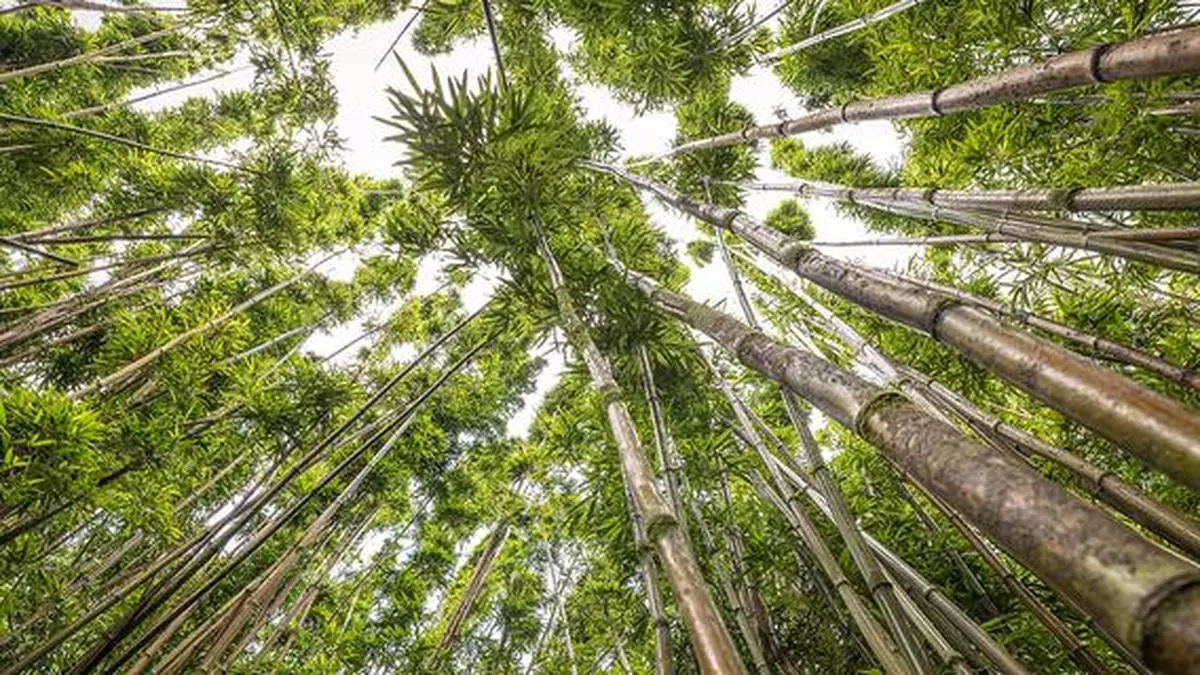The power of bamboo: A renewable resource to combat climate change
As the world contends with the harsh realities of climate change — escalating carbon emissions, deforestation, and environmental degradation — the search for solutions often points to advanced technology, policy reforms, or significant lifestyle shifts. Yet, one of the most effective tools has been quietly growing in nature: bamboo. Long associated with tradition and rural craftsmanship, bamboo is emerging as a pivotal resource in building a sustainable future. Its potential to revolutionise industries, create jobs, and dramatically cut carbon emissions positions it as a key solution to some of the world’s most urgent environmental and economic challenges.
The sustainable super plant
Bamboo is often described as a “miracle-plant” due to its unique ability to sequester carbon dioxide, grow rapidly, and regenerate after being harvested. Unlike conventional timber, which requires several decades to mature, bamboo can be harvested within a span of just three to five years, making it one of the fastest-growing plants globally. This rapid growth significantly alleviates pressure on forests, helping to preserve biodiversity and reduce deforestation.
In addition to its growth advantages, bamboo absorbs five times more carbon dioxide and releases 35 per cent more oxygen than trees, establishing it as an important asset in efforts to mitigate climate change. Furthermore, its intricate root system prevents soil erosion, particularly in regions prone to heavy rainfall and landslides. Additionally, bamboo thrives with minimal water and no pesticides, reducing its environmental footprint compared to conventional farming practices.
Redefining sustainability across industries
Bamboo is emerging as the material of the future, seamlessly blending sustainability with innovation across industries. Its strength rivals steel, offering architects a renewable alternative for green buildings that reduce environmental impact. Lightweight yet resilient, bamboo is increasingly used in earthquake-resistant structures, reshaping sustainable infrastructure.
In the fashion industry, bamboo fibres are being spun into soft, breathable fabrics that are biodegradable and naturally antibacterial. These textiles provide a compelling alternative to synthetic fabrics, addressing the growing demand for sustainable fashion without sacrificing quality or comfort.
But bamboo’s potential doesn’t end with traditional uses. It’s now at the forefront of cutting-edge innovations like bio-composites, which are being used in industries from automotive to electronics. These high-performance materials offer the strength and durability needed in modern manufacturing, all while being completely renewable.
A catalyst for economic and social transformation
Bamboo is an economic powerhouse transforming rural communities around the world. Globally, the bamboo industry is worthover $6.53 billion, and its potential is still largely untapped. In regions where traditional agriculture often struggles, bamboo is emerging as a reliable cash crop. Its ability to grow up to 3 feet in a single day, without the need for fertilisers, makes it a low-maintenance, high-yield plant option for farmers seeking sustainable income. In India alone, bamboo cultivation employs over 8 million people, with that number expected to rise as demand for eco-friendly products rises.
In rural areas, bamboo is transforming lives by providing sustainable livelihoods. From furniture to crafts, bamboo-based products create new opportunities for artisans and entrepreneurs. These economic benefits allow families to invest in education, healthcare, and local businesses, improving overall quality of life. Bamboo is not just an eco-friendly resource—it’s a tool for economic empowerment and community resilience.
Challenges, solutions, and the road ahead
Bamboo’s rise as an eco-friendly alternative comes with its own set of challenges. Over-harvesting and unsustainable management practices threaten its long-term viability, risking the depletion of this valuable resource. The solution lies in implementing sustainable practices such as rotational harvesting, replanting, and adhering to certifications like the Forest Stewardship Council (FSC). These measures will ensure that bamboo continues to thrive as a renewable resource without harming ecosystems.
Global awareness of bamboo’s potential is growing, but supportive policies are crucial. Countries like China have already established strict regulations to manage bamboo farming sustainably. As eco-conscious consumers drive demand for greener alternatives, bamboo is poised to capture a larger share of the $1 trillion green economy. However, realising its full potential requires collaboration between governments, industries, and communities to create a sustainable framework for bamboo cultivation and use.
Conclusion: Empowering a greener, resilient tomorrow
In a world desperate for climate solutions, bamboo stands as an untapped resource with immense potential. Aligned with SDG 13: Climate Action, bamboo offers a powerful tool to reduce carbon emissions, restore ecosystems, and drive sustainable economic growth. As global awareness of its benefits grows, bamboo could become a central player in the green economy, transforming industries while safeguarding the planet. The time to act is now. Governments, industries, and communities must embrace bamboo’s potential, invest in sustainable practices, and make it a cornerstone in the global fight against climate change. By integrating bamboo into more industries and daily life, we not only protect ecosystems but also take tangible steps toward a more resilient and climate-conscious future.
The author is Founder of Amwoodo
